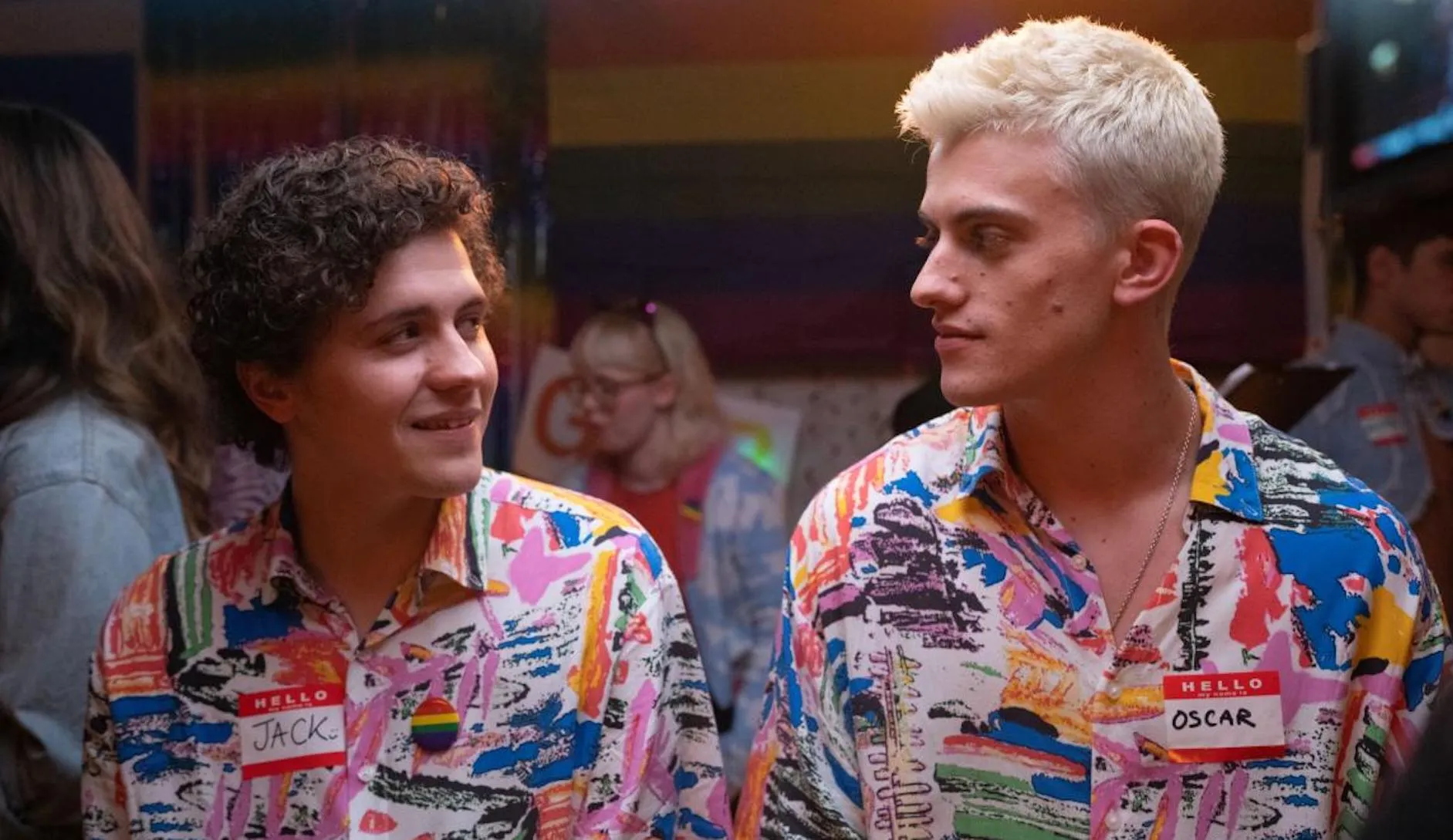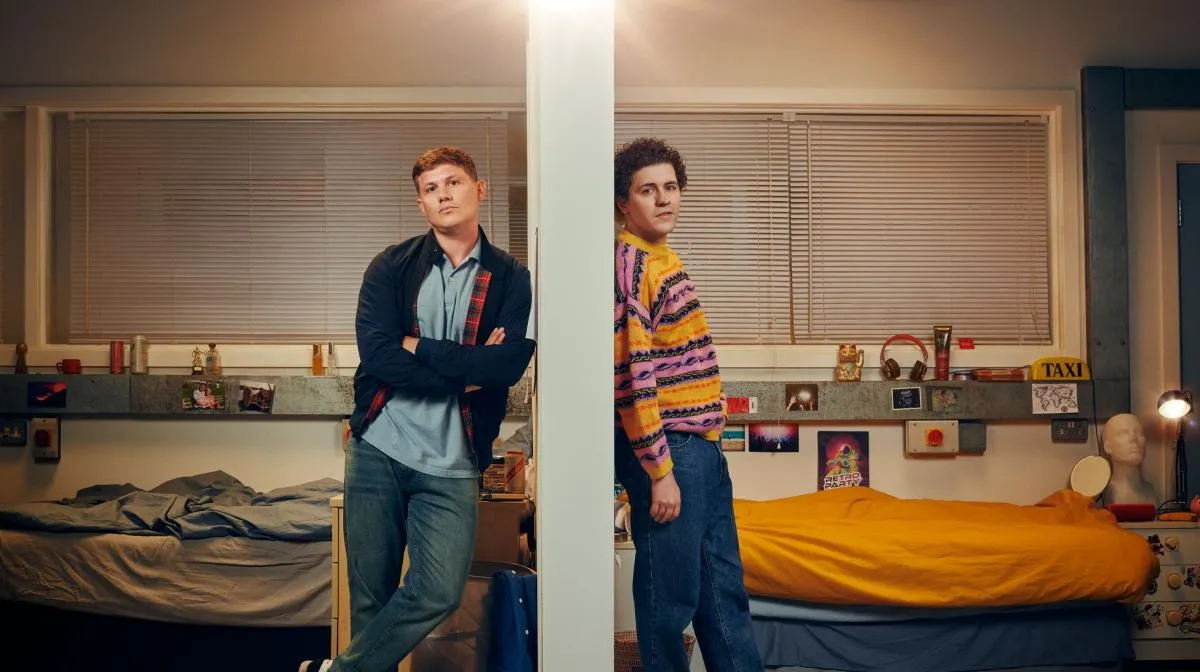In the quiet heat of 2015, a season emerges that stands as a memory of a time unspoiled by later turbulence. The narrative unfolds against a backdrop of a summer that still remembered its own gentle warmth, untouched by the disquiet of impending modern calamities.
There lingers an air of wistfulness, a sensation that even the playful banter of youthful revelry carries an undercurrent of sorrow and imminent farewell. At this point, the series is set in a world unburdened by the scars of later political and health crises; here, every subtle reference to a moment—be it the lighthearted nod to everyday experiences or the discreet murmur of nostalgia—conjures images of a past that is both ephemeral and tender.
Within this evocative frame, the narrative confesses its autobiographical origins. Drawing upon recollections of university days marked by raw discovery and poignant missteps, it projects the inner life of its creator onto a dual character whose existence is split between a present misadventure and a reflective, whispered recollection.
As the final chapter unfolds, there is a somber sense of an ending that lingers in every note of memory and regret, inviting viewers to contemplate the ephemeral nature of youth and truth.
Fragmented Reflections: Dualities in Storytelling
A layered narrative emerges through the portrayal of Jack in two distinct forms. On one hand, the physical embodiment offered by Dylan Llewellyn captures the immediacy of youth—raw, untamed, and unguarded.
On the other, the introspective tone conveyed by Jack Rooke provides a reflective counterpoint, a muted soliloquy resonating with the weight of past choices and forgotten echoes. This split portrayal invites contemplation on how fleeting moments of presence intertwine with memories that linger like shadows in quiet corridors of the mind.
The series employs flashbacks that surface unexpectedly, each serving as a transient echo of former selves. These fragments of recollection interrupt the flow of current events, leaving the viewer in a suspended state where time appears distorted.
Within these recalled scenes, there exists a palpable mix of sorrow and growth—a residue of unspoken loss mingled with the soft humor found in life’s ephemeral interludes. The interplay of these moments casts a reflective light on the human condition, suggesting that even in the midst of levity, the undercurrent of regret and longing persists.
A self-aware narrative structure further challenges the viewer’s perception of reality. The reflective commentary at times blurs the line between the fabric of the story and the author’s own life, provoking thought about the nature of memory and authenticity. In these shifting layers, the storytelling becomes an introspection on identity, posing subtle questions about how the past and present are woven together in the quiet artistry of human experience.
Ephemeral Shadows: The Weight of Memory
A pervasive sense of loss infiltrates the series, its origins marked by the absence of a guiding presence following Jack’s father’s passing. This absence lingers like a specter in the quiet moments between laughter and silence, its influence seeping into every character’s narrative.
Jack is haunted by memories of a bond severed too soon, his inner world painted with hues of sorrow and fleeting solace. Figures in his orbit bear their own private sorrows, expressions of grief veiled beneath everyday banter and carefree antics, yet ever-present in the quiet spaces between words.
Danny’s internal struggles offer a delicate study of melancholy. His portrayal captures a subtle interplay between moments of wry humor and the weight of an unseen despair. Private battles hint at the possibility that even smiles conceal turbulent currents, each silent pause a muted admission of inner unrest. The series observes these experiences with a raw, unadorned intensity, exposing the fragile state of existence that often escapes outward notice.
Within the confines of university life, ambition collides with uncertainty, crafting a canvas upon which the characters’ identities are ceaselessly redrawn. Academic pressures, experimental intimacies, and the quest for self-knowledge intermingle in a space where every choice carries both promise and peril. Growing up here is depicted with stark clarity, as emerging desires meet the quiet fear of irrevocable change.
A delicate undercurrent of nostalgia threads through the narrative, evoked by remnants of early 2010s culture—fleeting symbols that conjure shared memories and murmurs of a time when existence felt gentler. Each reference stands as a small relic, a subtle marker that recalls a chapter of life filled with whimsy and unspoken melancholy, challenging the viewer to recognize the bittersweet weight of days that slip away.
Fragmented Souls: The Unraveling of Character Connections
In this final phase of self-examination, Jack emerges as a figure caught between the fragility of youth and the inevitable shift toward self-awareness. Once defined by palpable awkwardness, his progression reveals a series of hesitant revelations and quiet conflicts, each marking a small transformation.
His dual portrayal—one defined by a bold physical presence on screen and another softly murmuring from an introspective vantage—serves as a prism refracting the multifaceted tensions of identity. Every gesture and pause seems to confess an inner tumult oscillating between hope and despair.
Danny, silently entangled in the weight of unseen sorrow, mirrors this internal strife. His struggle, marked by subdued melancholy, informs a delicate interplay with Jack. Their interactions, ranging from spontaneous laughter to fleeting, pained glances, hint at the complexity beneath a seemingly light rapport. In these moments, the subtle presence of depression surfaces, challenging the viewer to consider the hidden depths behind shared vulnerabilities.
Secondary figures further enrich this intricate portrait. Peggy’s steadfast influence, Shannon’s unpredictable cadence, and Yemi’s reflective musings interlace to form a network of relationships that ground the narrative in the messy reality of familial bonds and chosen kin.
These characters, each bearing their own unspoken scars, contribute to a quietly profound meditation on the nature of self, the weight of internal conflict, and the delicate balance required to sustain human connection. This intricate dance of vulnerability and fortitude unravels in moments that oscillate between raw confession and whispered introspection, leaving us to ponder the silent ramifications of each personal scar.
Echoes of Irony: Humor and Memory
A curious interplay unfolds as laughter dances with melancholy on the screen. The series carves moments of levity from the everyday—unexpected quips in a crowded lecture hall, a playful tease during a midnight conversation—each instance a brief reprieve from the lingering shadow of personal loss.
In these scenes, humor acts as both shield and mirror, reflecting an inner struggle that resists being silenced by sorrow. There is a sharp wit in the dialogue and a mischievous charm in situational antics, where even the most absurd circumstances hint at a deeper ache that words cannot quite capture.
Markers from a bygone era surface as silent witnesses to this duality. References to familiar British fare such as Tesco meal deals, lively banter about Top Gear’s latest twists, and murmurs echoing the spectacle of Celebrity Big Brother serve as cultural signposts.
These elements evoke a specific time—a period when everyday details carried the weight of personal memory and communal identity. Each nod to the early 2010s awakens recollections that are at once personal and collective, stirring both nostalgia and a questioning of how fleeting moments shape our understanding of self.
A wry satire cuts through the narrative, challenging the viewer to confront the contradictions of modern life. The laughter emerging from pointed social commentary is tinted with a raw vulnerability, as the show wavers between mockery and a sincere portrayal of the human condition. This oscillation leaves one pondering the nature of humor as both a mask and a revelation in the face of existential quietude.
Luminescent Shifts: The Dance of Tone and Image
The series unfurls its narrative with a rhythmic oscillation between bright flashes of comedy and the somber hues of introspection. This modulation invites the viewer to witness laughter in its transient glow while recognizing the subtle weight carried by quiet, reflective moments. Each scene pauses briefly, offering space where exuberance yields to a stillness that captures the fleeting interplay of delight and despair.
In the visual realm, flashbacks interwoven with current scenes create a layered canvas of memory and immediacy. A measured voiceover drifts through these sequences—a spectral guide steering us through echoes of a past that lingers like a half-remembered dream. This technique intensifies the mood, evoking themes of regret and yearning that stir beneath the surface of lighthearted exchanges.
The pacing orchestrates its own quiet rhythm, balancing bursts of kinetic energy with slower, meditative intervals. Such measured timing shapes a structure that mirrors the unpredictable cadence of human emotion. Here, moments of spontaneous humor and deep introspection coexist side by side, each contributing to a vivid, unsettled portrait of existence.
Final Reverberations: The Lingering Imprint
In these closing episodes, narrative threads that once drifted apart converge into a quiet symphony of shared memories and unresolved emotions. The last season unites fractured experiences and overlapping regrets with an artistry that feels both deliberate and fleeting—a melding of individual sorrow and collective hope.
Characters, marked by moments of unexpected tenderness and sudden separations, find their paths interlaced in ways that expose the delicate nature of human existence. A series that has examined the void left by absence, the piercing sting of loss, and the faint glow of camaraderie now presents a concluding arc that is at once satisfying and shrouded in bittersweet ambiguity.
Motifs of friendship, echoes of past grief, and the subdued struggle against inner darkness continue to linger even as the final scenes dim. Memories of bonds weathering relentless isolation and private confrontations with inner despair emerge like fragile specters, reminding the viewer of the inescapable pull of human connection.
There exists an unmistakable air of melancholy, softened by fleeting flashes of humor—a subtle acknowledgment that even in the depths of darkness, a spark of mirth can momentarily illuminate the void.
The narrative’s closing passages prompt a reflective pause, inviting both mourning and a silent celebration of resilience. In this delicate interplay of sorrow and humor, the series leaves behind an imprint that is as haunting as it is tender, its echo etched upon the audience like a whispered confession in the stillness of night.
The Review
Big Boys Season 3
Big Boys Season 3 unfurls as an introspective farewell, interweaving the bittersweet cadence of youth with silent undercurrents of loss and levity. Its layered narrative probes the fragile interplay of memory and identity, capturing fleeting moments where laughter hides an echo of sorrow and joy carries a trace of mourning. This reflective final chapter invites viewers to ponder the transitory nature of existence, leaving an enduring, subtle imprint on the mind.
PROS
- Poetic narrative depth
- Nuanced portrayal of loss and humor
- Layered character development
- Effective use of flashbacks and dual narrative
CONS
- Inconsistent pacing at moments
- An overwhelmingly somber tone for some viewers





















































